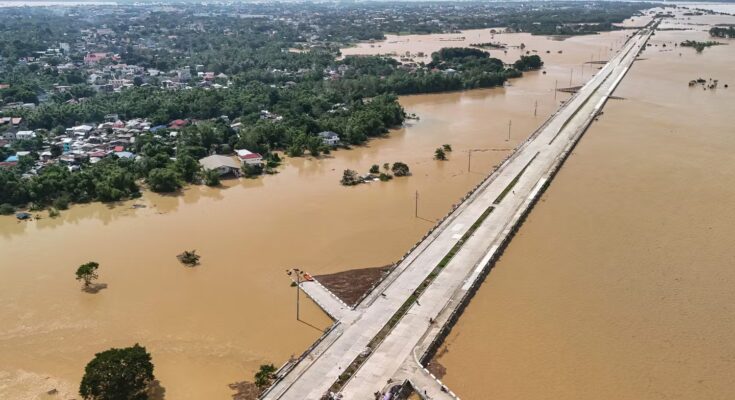Philippine rescue teams equipped with backhoes and chainsaws began cleaning up damage caused by Typhoon Fung-Wong on Tuesday, November 11, which killed 18 people and caused the evacuation of 1.4 million people.
Fung-wong had been downgraded to severe tropical storm status when it began dumping rain on the neighboring island of Taiwan, where it was expected to make landfall on Wednesday.
The typhoon hit the east coast of the Philippines on Sunday evening, covering almost the entire region, just days after Typhoon Kalmaegi hit the country’s central islands, killing at least 232 people according to the latest figures.
In the coastal province of Isabela, a town of 6,000 remained cut off from the outside world on Tuesday, a civil defense spokesman told Agence France Presse (AFP), and parts of the neighboring province of Nueva Vizcaya were also isolated.
“We are having difficulty accessing this area”said Alvin Ayson, spokesman for the Cagayan Valley region, adding that landslides had prevented rescue teams from reaching affected residents.
Other residents today “in evacuation centers, but when they return home, it takes time to rebuild”he added. According to him, a 10-year-old child died as a result of one of the landslides in Nueva Vizcaya. The child was one of 18 deaths recorded in a new report published Tuesday by senior civil defense official Rafaelito Alejandro.
Difficulty accessing running water
In a telephone interview, Alejandro explained to AFP that such efforts had been made “early recovery” will take weeks. “The biggest challenges for us now are restoring access to remote places, clearing roads and rehabilitating power and communication lines, but we are working to overcome them”he explained.
On Catanduanes Island, which was hardest hit, difficulties accessing clean water could continue for up to twenty days, he estimated.
Fung-Wong is now heading to Taiwan, where schools and offices were closed in some areas on Tuesday. The approaching storm worsens the northeast monsoon, causing heavy rains. Rainfall of up to 400 millimeters is expected in the next 24 hours, government and weather officials reported.
President Lai Ching-te urged people to avoid mountainous areas, beaches and “another dangerous place” For “Pass this period safely”.



